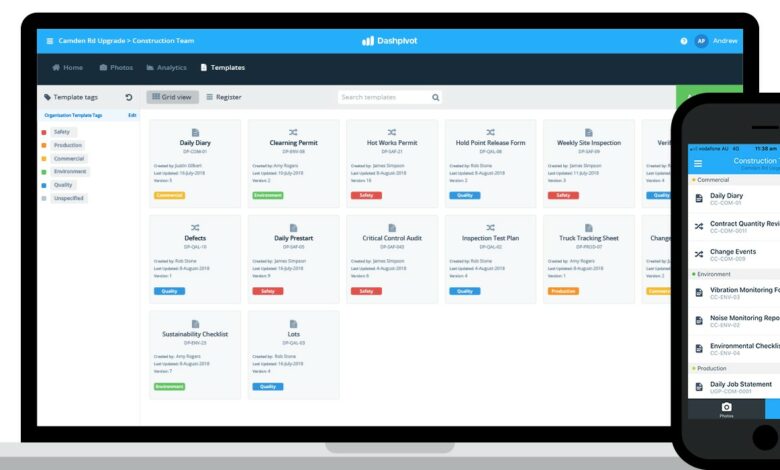
Table of Content
Document management software is essential for businesses of all sizes and industries to streamline their operations, improve productivity, and reduce costs. With the increasing amount of data and documents that businesses need to manage, it is becoming more challenging to keep track of them manually. These management softwares helps businesses to digitize, organize, and store documents securely in a centralized location, making it easier to access and share information across teams and departments.
Read Also: BIM Software
Essential features of document management software’s include document capture, indexing, search, retrieval, version control, security, and collaboration. These features enable businesses to automate their document workflows, reduce errors, and ensure compliance with regulatory requirements. Document management software also provides insights into document usage, performance, and trends, enabling businesses to make data-driven decisions and improve their processes continuously.
In this article, we will provide an overview of the top 10 document management software solutions available in the market. We will compare their features, pricing, and customer support to help businesses choose the right software for their needs. We will also provide implementation strategies, case studies, and success stories to help businesses understand how to use document management software effectively. Finally, we will discuss the future trends in document management and provide tips on how to choose the right software for your business.
Read Also: Remote Desktop Software And Application
Key Takeaways
- Document management software is essential for businesses to streamline their operations, improve productivity, and reduce costs.
- Essential features of document management software include document capture, indexing, search, retrieval, version control, security, and collaboration.
- Businesses can choose the right document management software by comparing their features, pricing, and customer support, and by understanding their implementation strategies and best practices for success.
Essential Features of Document Management Software
When choosing a document management software, there are a few essential features that should be considered. These features are crucial for any organization that wants to effectively manage and organize their documents. Below are the most important features to look for in a document management software:
Version Control
Version control is a feature that allows users to keep track of changes made to a document over time. This feature is important because it ensures that users are always working with the most up-to-date version of a document. Document management software with version control also allows users to easily revert to previous versions of a document if needed.
Access Permissions
Access permissions are important for maintaining the security of your documents. Document management software should allow administrators to set permissions for who can access, edit, and delete documents. This feature ensures that only authorized users can access sensitive information and helps prevent data breaches.
Search and Retrieval
Search and retrieval is a feature that allows users to quickly find and retrieve documents. This feature is important because it saves time and increases productivity. Document management software with search and retrieval capabilities should allow users to search for documents based on keywords, dates, and other criteria.
Collaboration Tools
Collaboration tools are important for organizations that have multiple users working on the same documents. Document management software should allow users to collaborate on documents in real-time, share comments, and track changes. This feature ensures that all users are on the same page and can work together efficiently.
Overall, these essential features are crucial for any organization that wants to effectively manage and organize their documents. By choosing a document management software that includes these features, organizations can save time, increase productivity, and maintain the security of their documents.
Benefits of Using Document Management Software
Document management software is an essential tool for businesses of all sizes. It offers a wide range of benefits that can help improve efficiency, enhance security, reduce costs, and ensure regulatory compliance. Here are some of the key benefits of using document management software:
Improved Efficiency
Document management software can help streamline business processes by providing a centralized location for storing, organizing, and accessing documents. This makes it easier for employees to find the information they need quickly, without having to waste time searching through multiple file cabinets or folders. Additionally, document management software can automate tasks such as document routing, approvals, and version control, which can help reduce errors and improve productivity.
Enhanced Security
One of the biggest concerns for businesses when it comes to document management is security. Document management software offers a range of security features, such as user permissions, encryption, and audit trails, that can help protect sensitive information from unauthorized access or theft. This can help businesses comply with data privacy regulations and prevent costly data breaches.
Cost Savings
Document management software can help businesses save money by reducing the need for physical storage space, paper, and printing supplies. By digitizing documents and automating workflows, businesses can also reduce the amount of time and resources required to manage documents, which can lead to significant cost savings over time.
Regulatory Compliance
Many industries are subject to strict regulations when it comes to document management. Document management software can help businesses comply with these regulations by providing a secure, auditable, and organized system for storing and managing documents. This can help businesses avoid fines, legal issues, and reputational damage.
Overall, document management software is an essential tool for businesses that want to improve efficiency, enhance security, reduce costs, and ensure regulatory compliance. By investing in the right document management software, businesses can streamline their operations, protect their sensitive information, and stay ahead of the competition.
Top 10 Document Management Software Overview
Document management software is a type of software that helps businesses manage, store, and track electronic documents. With the increasing amount of digital documents, the need for document management software has become more important than ever. Here are the top 10 document management software solutions that can help businesses streamline their document management process.
Microsoft SharePoint is a web-based document management software that allows businesses to store, organize, and share documents. It offers features such as version control, workflow automation, and collaboration tools.
Software 2: Google Drive
Google Drive is a cloud-based document management software that allows businesses to store, share, and collaborate on documents. It offers features such as real-time editing, version control, and file sharing.
Software 3: Dropbox
Dropbox is a cloud-based document management software that allows businesses to store, share, and collaborate on documents. It offers features such as file syncing, version control, and file sharing.
Software 4: Box
Box is a cloud-based document management software that allows businesses to store, share, and collaborate on documents. It offers features such as file syncing, version control, and file sharing.
Software 5: Adobe Document Cloud
Adobe Document Cloud is a cloud-based document management software that allows businesses to create, edit, and sign documents. It offers features such as e-signatures, document tracking, and collaboration tools.
Software 6: DocuSign
DocuSign is a cloud-based document management software that allows businesses to create, edit, and sign documents. It offers features such as e-signatures, document tracking, and collaboration tools.
Software 7: Evernote Business
Evernote Business is a note-taking and document management software that allows businesses to store, organize, and share notes and documents. It offers features such as version control, collaboration tools, and task management.
Software 8: OneDrive
OneDrive is a cloud-based software that allows businesses to store, share, and collaborate on documents. It offers features such as file syncing, version control, and file sharing.
Software 9: Zoho Docs
Zoho Docs is a cloud-based software that allows businesses to store, share, and collaborate on documents. It offers features such as real-time editing, version control, and file sharing.
Software 10: OpenText Content Suite
OpenText Content Suite is an enterprise-level document management software that allows businesses to manage large volumes of documents. It offers features such as workflow automation, version control, and collaboration tools.
Comparative Analysis of Top Software
User Interface Comparison
When it comes to user interface, some document management softwares stands out from the rest. For instance, Dropbox Business has an intuitive user interface that is easy to navigate. It has a clean design, and users can easily upload, share and access files. Google Drive also has a simple and user-friendly interface that makes it easy for users to collaborate on documents.
On the other hand, Box has a more complex interface that may require some training for new users. However, it offers advanced features that make it ideal for enterprise-level document management. Microsoft OneDrive has a similar interface to Google Drive, but it may take some time to get used to for users who are not familiar with Microsoft products.
Feature Set Comparison
Different document management software has different feature sets. For instance, Adobe Document Cloud offers advanced editing and collaboration tools, making it ideal for businesses that deal with PDF documents. Evernote Business is more focused on note-taking and organization, with features such as tagging and reminders.
Dropbox Business and Google Drive offer similar features, such as file sharing, collaboration, and version control. However, Google Drive has a more robust suite of productivity tools, including Google Docs, Sheets, and Slides.
Pricing Comparison
Pricing is an important consideration when choosing document management software. Google Drive and Microsoft OneDrive offer affordable plans that are suitable for small businesses. Dropbox Business and Box are more expensive, but they offer advanced features that make them ideal for enterprise-level document management.
Adobe Document Cloud and Evernote Business are also on the higher end of the pricing spectrum, but they offer unique features that may be worth the investment for businesses that require advanced document management tools.
Overall, choosing the right document management software depends on the specific needs of a business. By comparing the user interface, feature set, and pricing of different software, businesses can make an informed decision and choose the software that best suits their needs.
Implementation Strategies
When it comes to implementing document management software, there are several strategies that can be employed to ensure a smooth and successful transition. This section will cover some key implementation strategies that organizations can use to ensure a successful deployment.
Planning and Preparation
One of the most critical aspects of implementing document management software is proper planning and preparation. This involves identifying the specific needs of the organization, selecting the appropriate software, and creating a detailed implementation plan. It is important to involve all stakeholders in the planning process to ensure that everyone’s needs are addressed.
Migration Best Practices
Migrating existing documents to the new system can be a daunting task, but with the right approach, it can be done smoothly and efficiently. Organizations should start by identifying the types of documents that need to be migrated and creating a plan for how they will be transferred to the new system. It is also important to ensure that all documents are properly indexed and tagged to make them easy to find and retrieve.
Training and Support
Once the new system is in place, it is crucial to provide adequate training and support to ensure that all users are comfortable with the new software. This includes providing training sessions for all users, as well as ongoing support to address any issues that may arise. It is also important to have a dedicated support team in place to handle any technical issues that may arise.
By following these implementation strategies, organizations can ensure a smooth and successful transition to document management software. Proper planning and preparation, migration best practices, and adequate training and support are all critical components of a successful implementation.
Case Studies and Success Stories
Many businesses have benefited from implementing document management software. Here are a few case studies and success stories of companies that have seen significant improvements in their document management processes:
- ABC Corporation: ABC Corporation, a multinational company, was struggling with managing their large volume of documents. They implemented a DM software that helped them organize their documents and made it easier for employees to access the information they needed. As a result, they saw a 30% increase in productivity and a 50% reduction in document retrieval time.
- XYZ Inc.: XYZ Inc. was facing compliance issues due to their inability to manage and track their documents effectively. They implemented a DM software that allowed them to maintain a centralized repository of documents and track their revisions. This helped them comply with regulations and avoid penalties. They also saw a 40% reduction in document processing time.
- LMN Corporation: LMN Corporation was struggling with managing their paper-based documents and was spending a lot of money on printing, storage, and retrieval. They implemented a DMS that helped them digitize their documents and automate their workflows. This helped them save money on printing and storage costs and reduced their document retrieval time by 60%.
These case studies and success stories demonstrate the benefits of implementing document management software. By streamlining document management processes, businesses can improve their productivity, comply with regulations, and save money.
Future Trends in Document Management Software
As technology continues to evolve, the management software is likely to undergo significant changes in the future. Here are some of the trends that are expected to shape the future of document management:
Artificial Intelligence (AI) Integration
AI is expected to play a significant role in the future of document management. With AI, document management solutions can automatically classify and categorize documents, extract information from them, and even suggest how to best handle them. This will significantly reduce the time and effort required to manage documents, making it easier for businesses to focus on their core operations.
Cloud-Based Solutions
Cloud-based document management solutions are becoming increasingly popular, and this trend is expected to continue in the future. Cloud-based solutions offer several benefits, including increased accessibility, scalability, and cost-effectiveness. With cloud-based solutions, businesses can access their documents from anywhere, at any time, and on any device.
Increased Security Measures
As the importance of document security continues to grow, the software is expected to incorporate more advanced security measures. This includes features such as encryption, access controls, and audit trails. These security measures will help businesses protect their sensitive information from unauthorized access and cyber threats.
Integration with Other Systems
DM software is expected to become more integrated with other systems, such as customer relationship management (CRM) software, enterprise resource planning (ERP) software, and project management software. This integration will allow businesses to streamline their operations and improve their overall efficiency.
In conclusion, DMS is expected to undergo significant changes in the future, driven by advancements in technology and changing business needs. By embracing these trends, businesses can improve their document management processes and stay ahead of the competition.
Choosing the Right Software for Your Business
When it comes to document management software, choosing the right one for your business is crucial. With so many options available, it can be overwhelming to determine which one is the best fit. Here are some factors to consider when selecting management software.
Assessing Your Needs
Before choosing a management software, it’s important to assess your business needs. Consider how many documents you need to manage, the size of your team, and the types of documents you work with. You should also evaluate your current document management process and identify areas that need improvement.
Evaluating Software Fit
Once you’ve assessed your needs, the next step is to evaluate the software fit. Look for software that offers features that align with your business needs. Consider the software’s ease of use, customization options, and compatibility with your existing systems. It’s also important to evaluate the software’s security features and ensure they meet your business’s security requirements.
When evaluating software fit, consider the software’s pricing model. Some software is priced per user, while others are priced per document or offer a flat rate. It’s important to choose software that fits within your budget and provides value for your money.
In conclusion, choosing the right software for your business requires careful consideration of your needs and evaluating the software’s fit. By taking the time to assess your needs and evaluate software options, you can ensure that you select the software that best meets your business needs.
Conclusion
In conclusion, DMS is an essential tool for businesses of all sizes. With the ability to store, organize, and access documents efficiently, these software solutions can help streamline workflows and increase productivity.
The top 10 document management solutions listed in this article offer a range of features and capabilities to suit different business needs and budgets. From cloud-based solutions to on-premise options, there is a solution for everyone.
Overall, it’s important to carefully evaluate your business needs and consider factors such as ease of use, security, and scalability when selecting any software. With the right software in place, businesses can save time, reduce costs, and improve collaboration.




